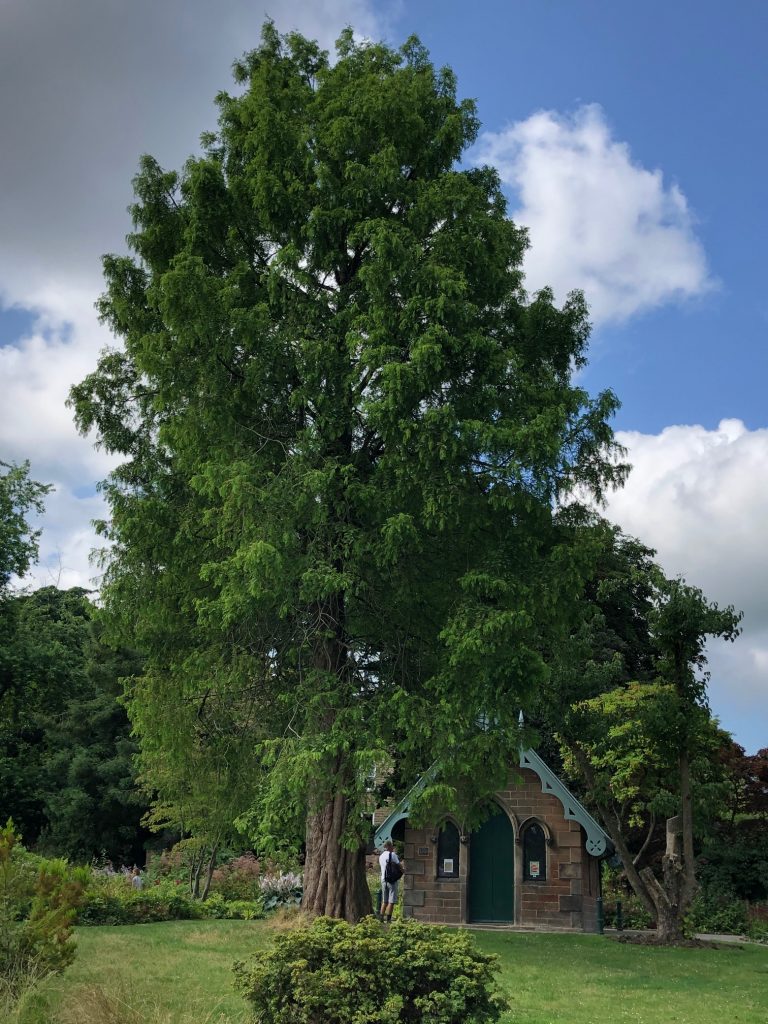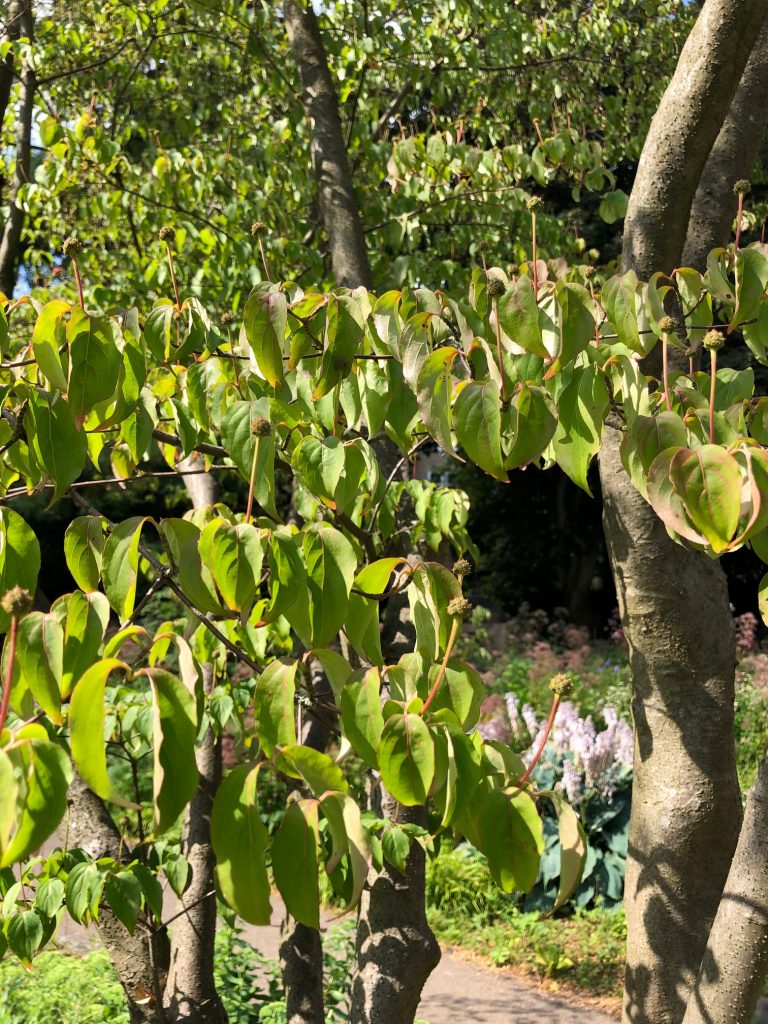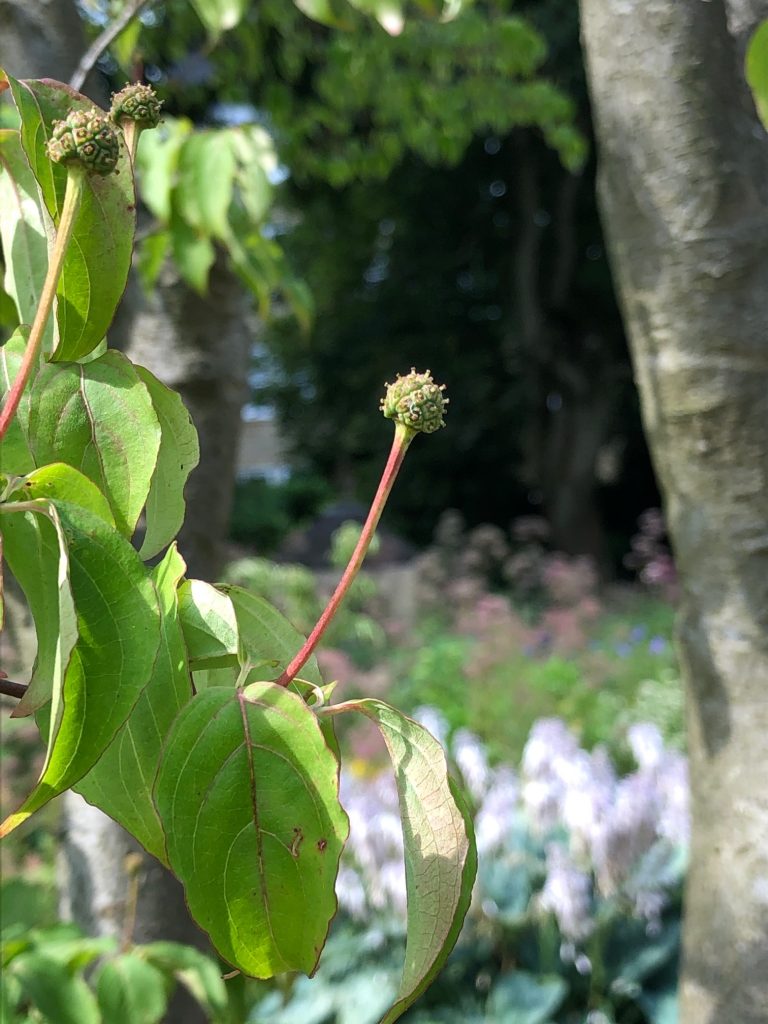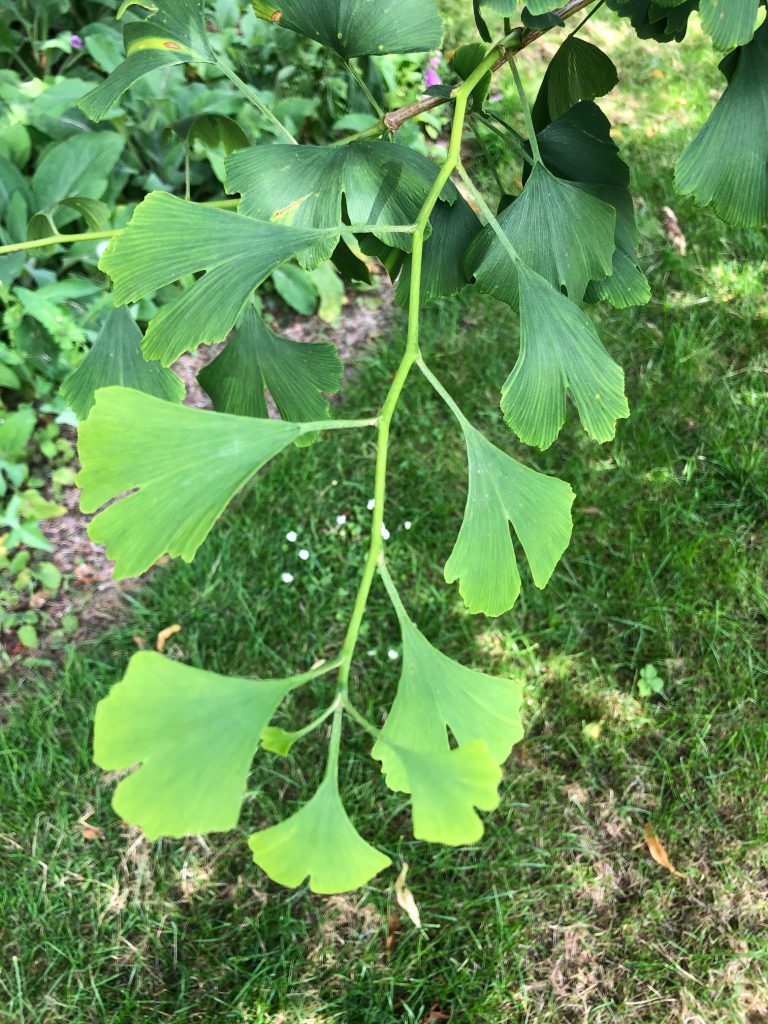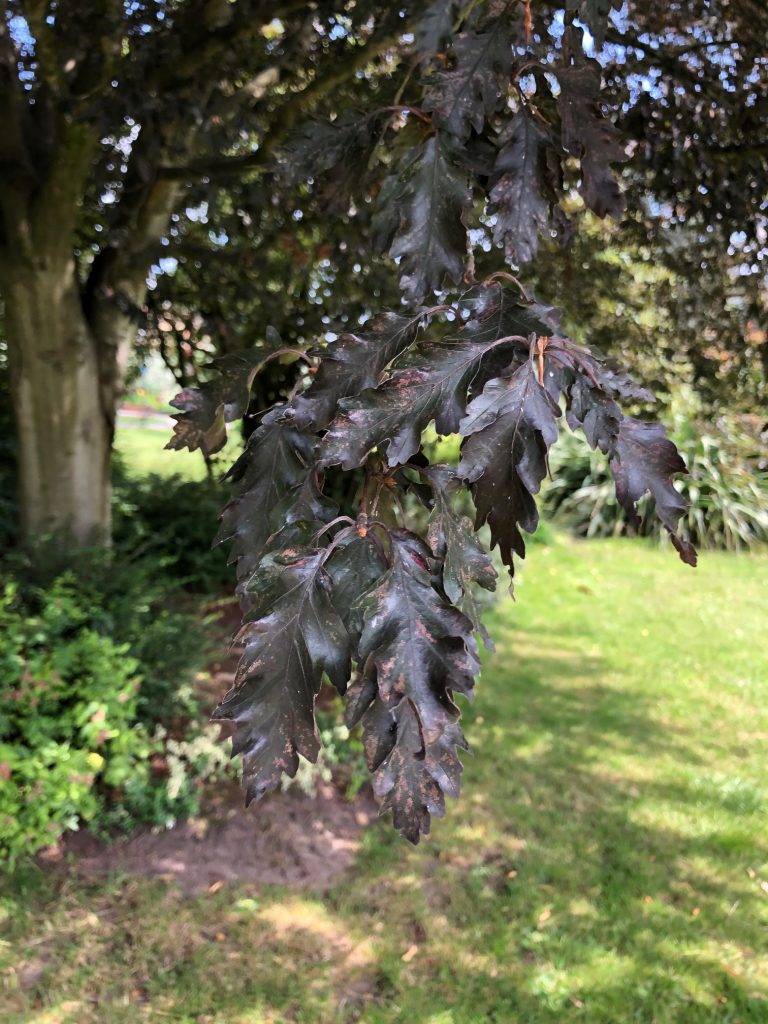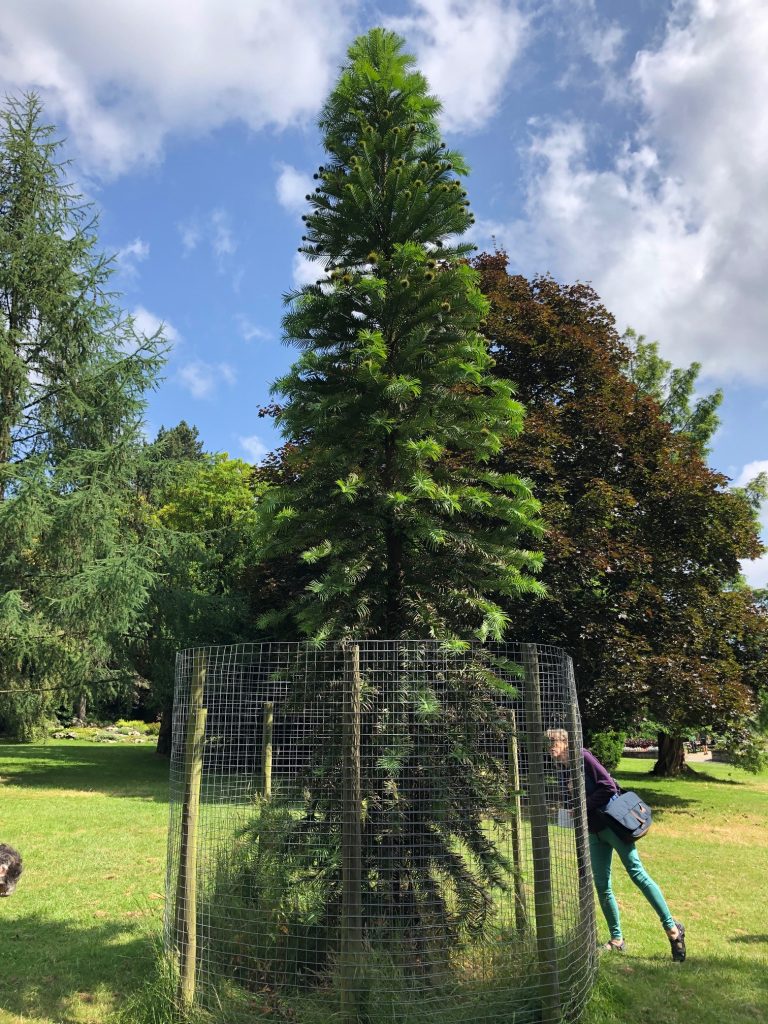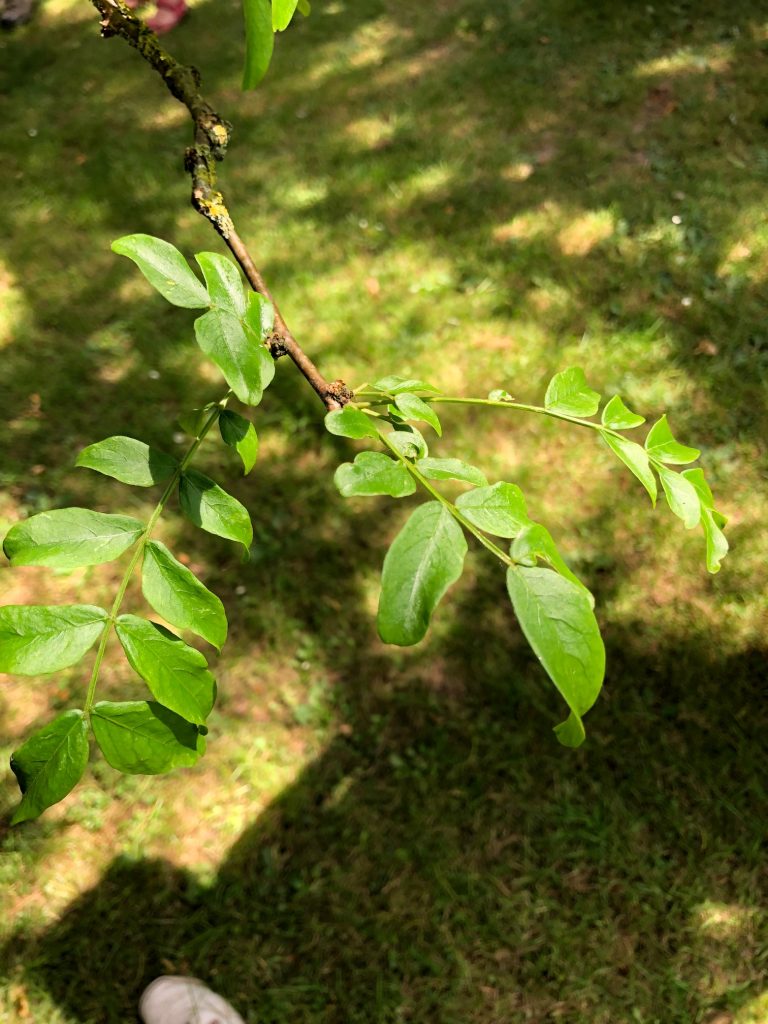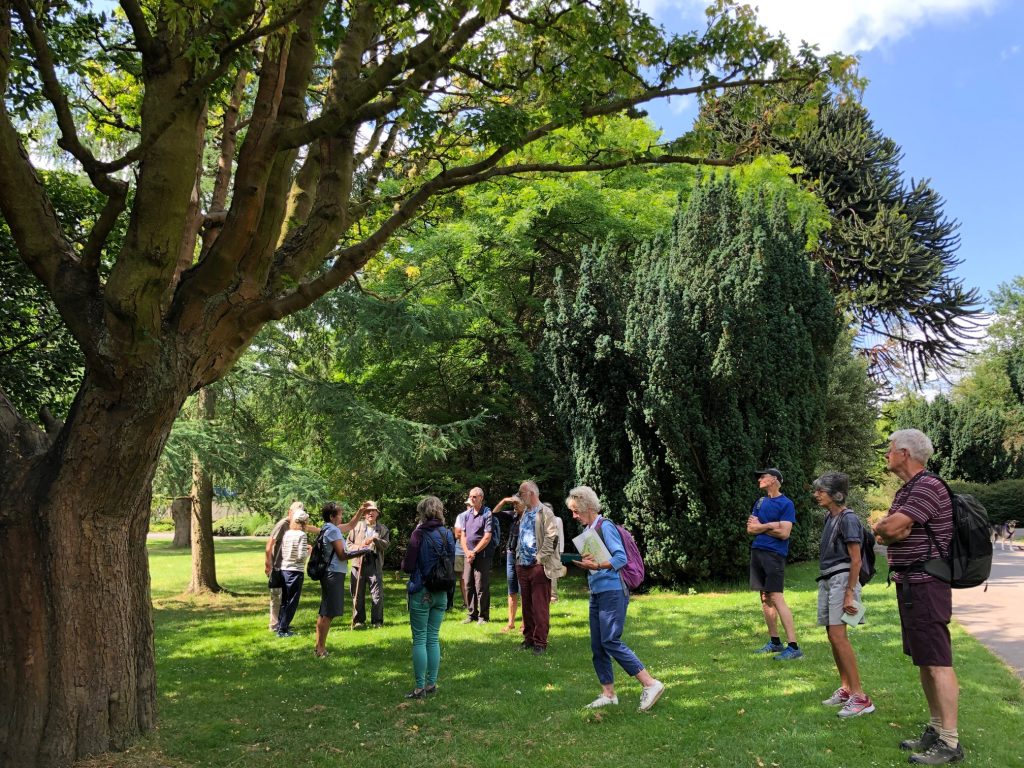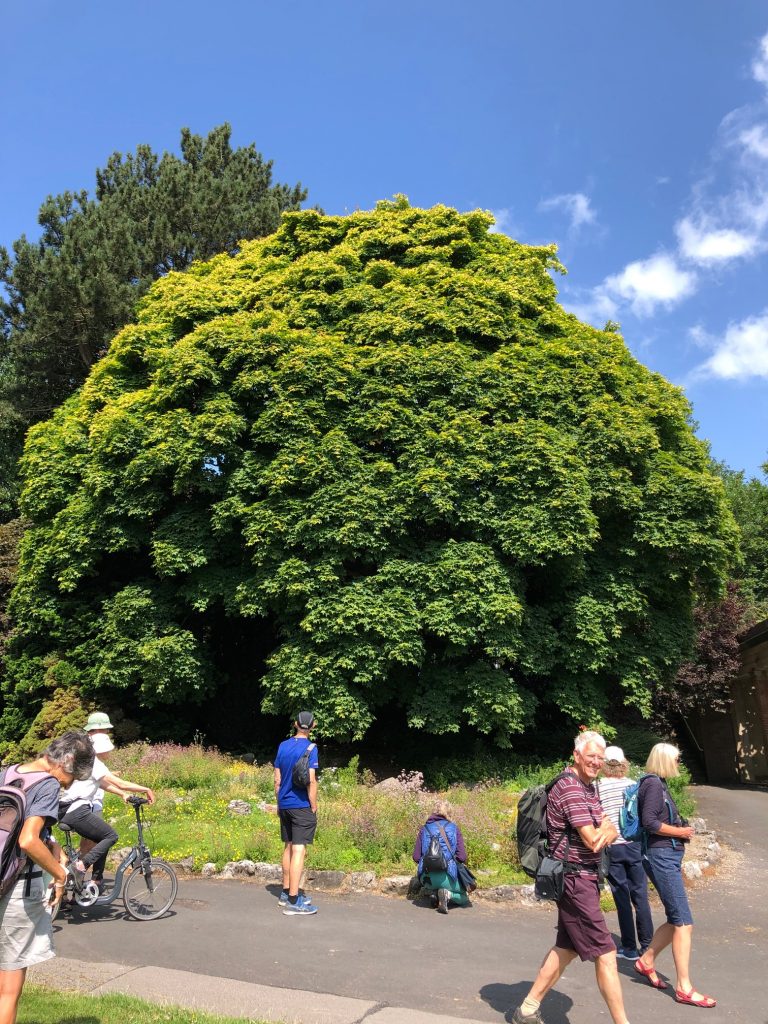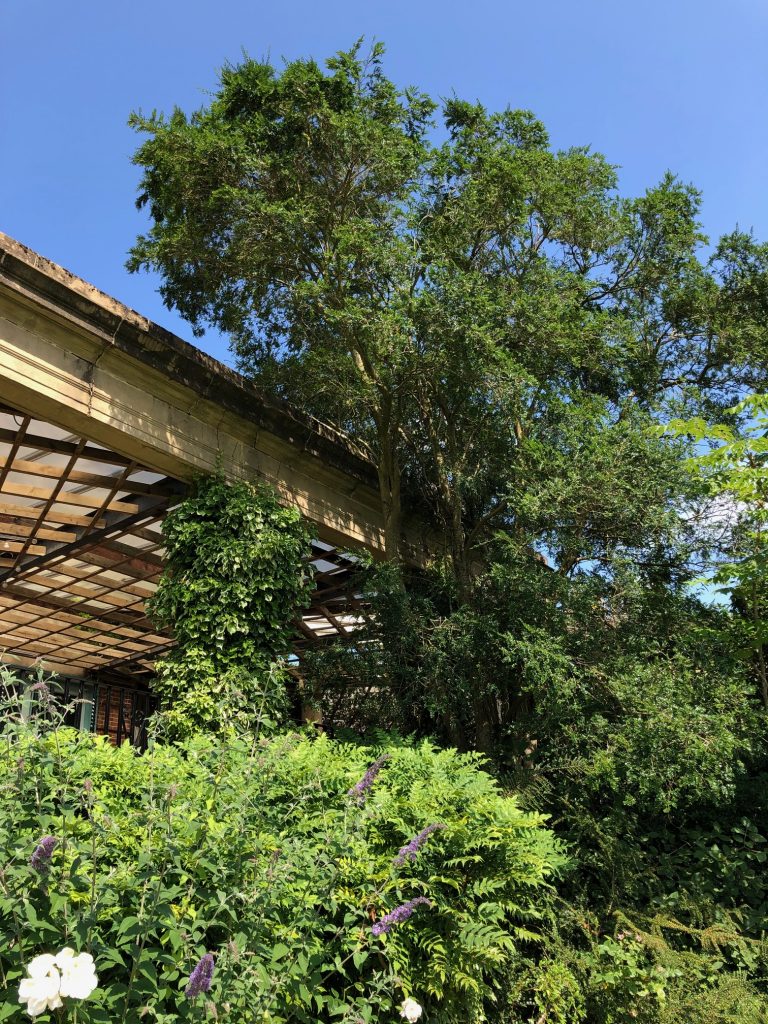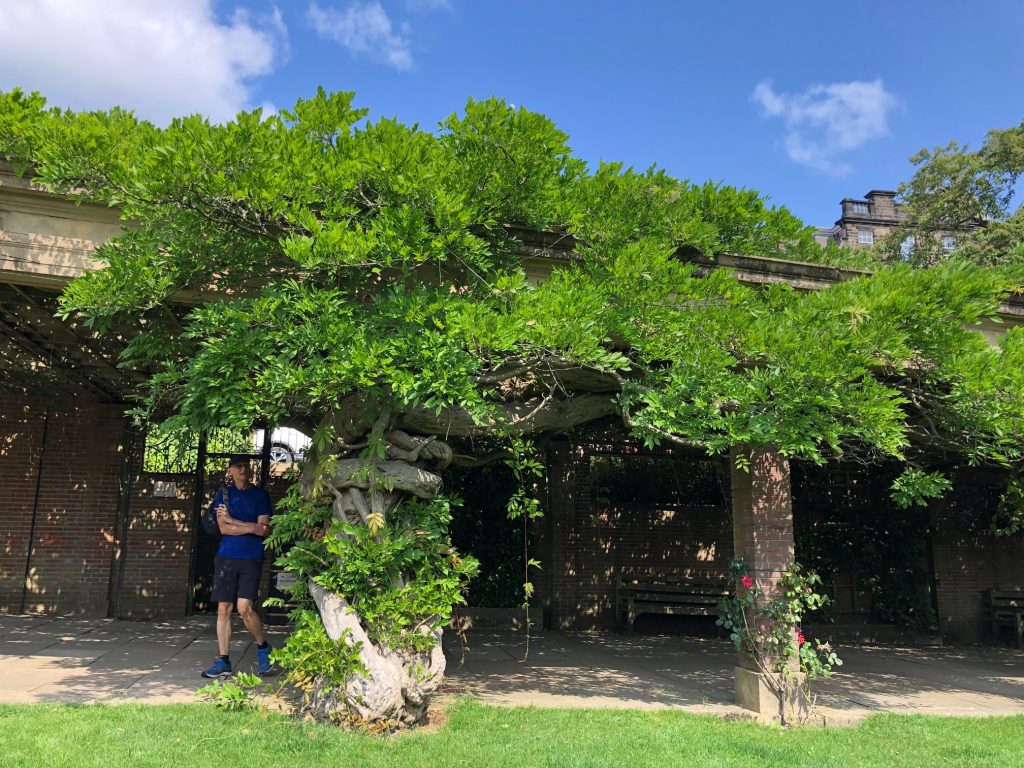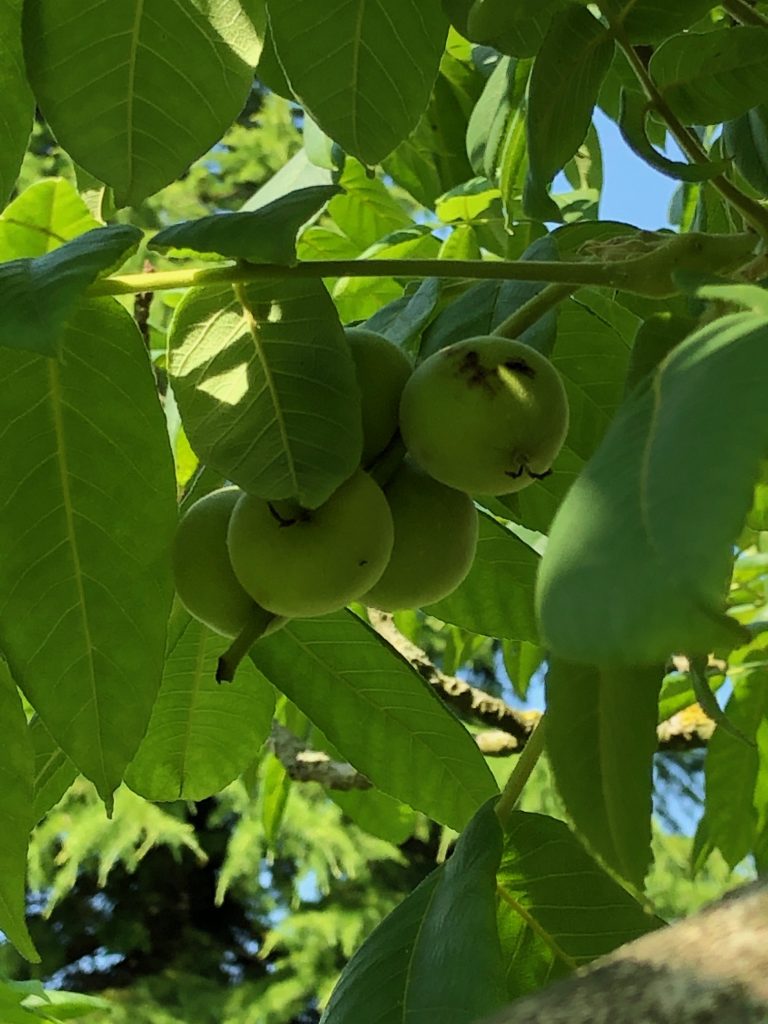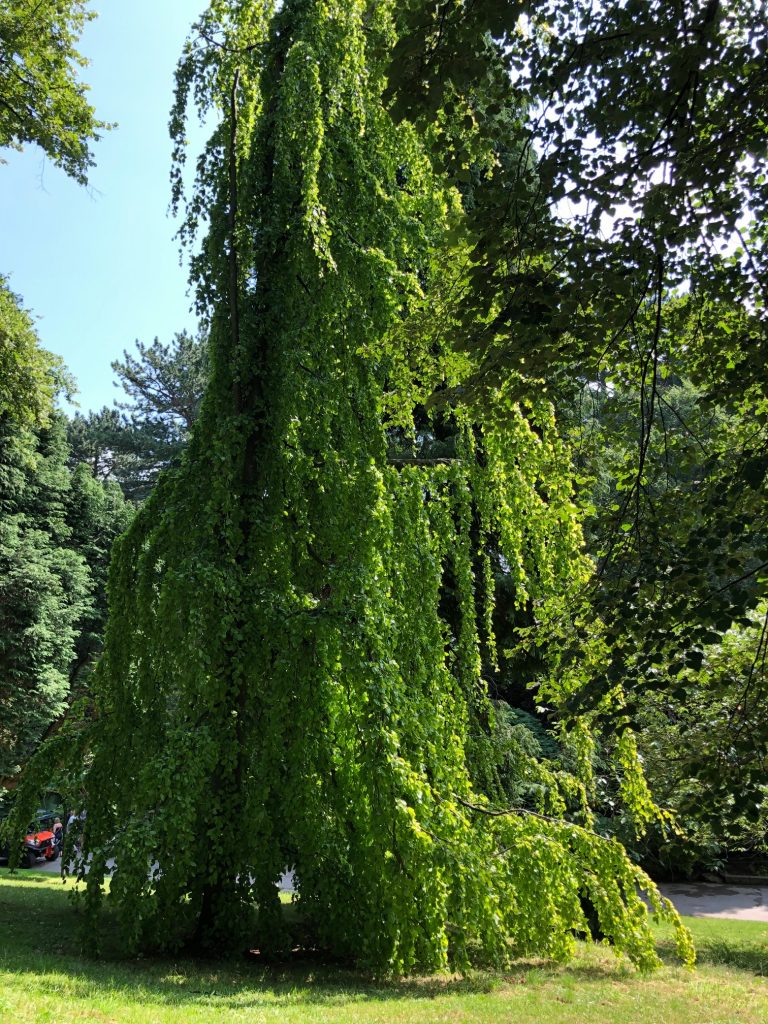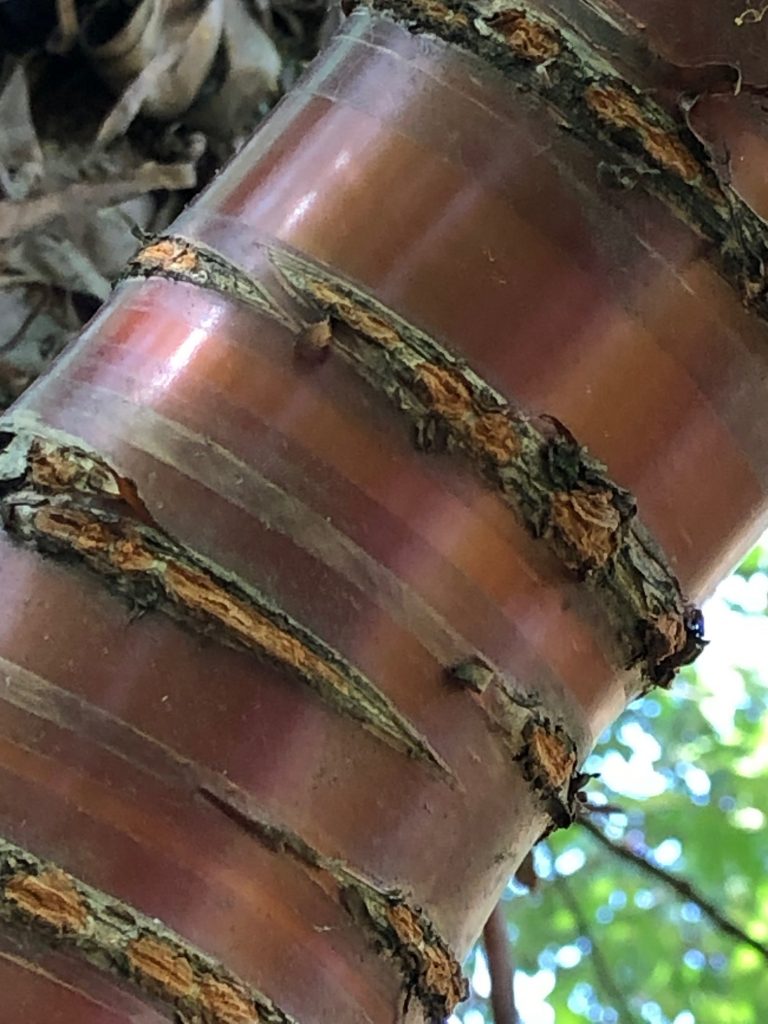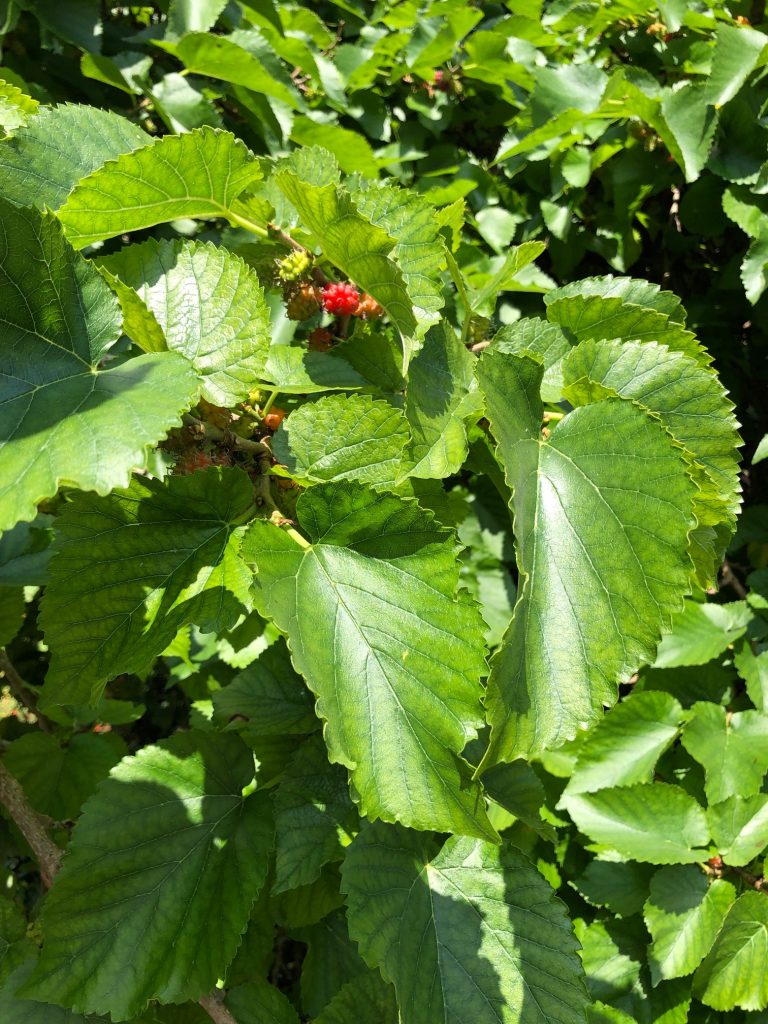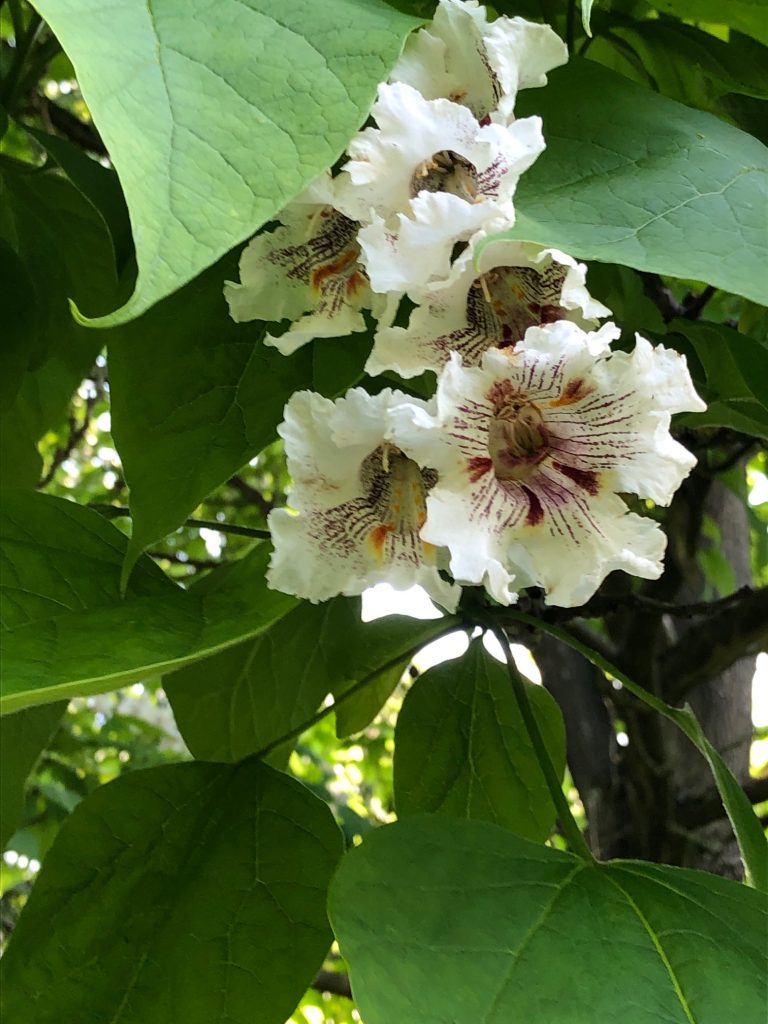Who knew there are so many wonderful and special trees in our very own Valley Gardens? I didn’t – just me then? – I must have walked through the gardens a million times and never really looked up! Too busy trying to identify the lovely flowers and plants in the beds and borders I guess. So I was fascinated to learn more……
16 members met at the Gardener’s Compound on Back Lane, on the most glorious July morning. Our guide was Sue Wood, Horticultural Officer for Harrogate Borough Council. Sue briefly outlined the history of the site, beginning in 1841 when the Harrogate Improvement Act approved a footpath across Bogs Field to provide access to the mineral springs. In 1888, as part of the celebrations for Queen Victoria’s Golden Jubilee, a competition was held for a design to change this damp area into a park. Ideas from three different entries were incorporated into the final plan for the Gardens. Today Valley Gardens covers 17 acres and is a Historic England Grade II Listed garden and parkland, divided into ornamental, recreational and woodland areas.
We started our walk at the Old Magnesia Well Pump Room looking at the Handkerchief tree and the magnificent Dawn Redwood (Metasequoia glyptostroboides) introduced in the 1940’s (photo 1). The Cornus kousa (Photo 2), next to the Redwood, was just forming its fruits (photo 3) which apparently can be used in wine making and also have a great many medicinal properties – allegedly. A Ginkgo biloba tree is on the other side of the path, known as the maidenhair tree, deciduous, and native to China this also – allegedly – has many medicinal properties. It is a very pretty tree with a distinctive leaf (photo 4)
There were several trees with a fungal blight and the Park’s Department are monitoring these. There are quite a lot of blight and other disease problems hitting certain trees at the moment in general. It is thought that importing goods on pallets brings pests and disease within the wood itself. Importing of furniture could also bring unwanted pests. The affected trees makes them weak and potentially dangerous and need to be felled. It is hoped to plant a number of new trees especially to celebrate the Queen’s Platinium Jubilee next year, in and around Harrogate especially along the Wetherby Road. Ash dieback is another problem, it is a fungus transmitted through the air and may hit trees with existing underlying problems.
The Oak-leaved Beech (Fagus sylvatica ‘Rohanii’) was a stark contrast against the surrounding green with its dark foliage. (photo 5). We crossed the Lime Tree Walk, which is still lined with the trees, although a few have been lost over the years. It originally lined the route to the site of the former Royal Bath Hospital as it was in 1910. On to the Wollemi Pine (Wollemia noblis) which was donated to the gardens in 2007, native of New South Wales. Sadly, due to vandalism, it is surrounded by a protective fence but it is growing vigorously and producing very different shaped healthy looking cones. (photo 6) Unfortunately, some of the wooden sculpture carvings in the New Zealand Garden have also been the subject of mindless vandalism.
We stopped to see the Honey Locust tree (Gledista triacanthos) (photo 7) from the eastern North America, also known as thorny locust because it has the most vicious thorns but its wood makes excellent strong, durable and high-quality timber. The strongly scented cream-coloured flowers appear in late spring, in clusters emerging from the base of the leaf axils. Next was the Scotch Laburnum, a Gold Medal Champion, in the foreground on the left of this picture (photo 8) of our group. It is a much later flowering variety than normal Laburnum and can easily grow to 400 years old. In the background see the most enormous Monkey Puzzle tree – the only tree a Monkey cannot climb – allegedly. The most magnificently shaped Acer caperdosium aurea, a maple native to Asia is a County Champion. (photo 9).
We walked all along in front of the Sun Pavillion which was restored after falling into disrepair and the Council planned to replace it then with a car park! Appalled resident of Harrogate, Anne Smith, founded the Friends of Valley Gardensand asked Geoffrey Smith, James Herriot and David Bellamy to become Patrons. After a long and hard-fought campaign, in December 1998 the restored Sun Pavilion was opened by Her Majesty Queen Elizabeth II. The Sun Colonnade was also saved, originally to provide shelter for the residents and tourists walking through to ‘take the waters’. Azara microphylla (photo 10), the Boxleaf azara, is a species of flowering plant in the willow family Salicaceae, native to Chile and Argentina and it towers above the Pavilion colonnade. Next an Aralia spinosa, commonly known as devil’s walking stick, is a woody species of family Araliaceae, native to eastern North America. The various names refer to the viciously sharp, spiny stems, petioles, and even leaf midribs. It has also been known as Angelica-tree. It is not clear if the Wisteria around the colonnade pillar is holding the pillar up, or the other way around. (photo 11)
Next we came across the Butternut/White Walnut tree (Juglans cinerea), (photo 12) native to eastern North America, there are said to be many medicinal purposes for every part of this tree including mosquito repellent, a dermatological aid, anti-diarrhoea, a laxative and a treatment for parasitic worms. We studied the Kentucky Coffee tree which is British and Irish Champion. Pioneers used the seed as a coffee substitute, the leaves used as fly poison and the wood pulp used to cure insanity – allegedly. The Weeping Golden Beech (Fagus sylvatica pendula aurea) (photo 13) is spectacular and British & Irish Champion. The timber is often used to make chair arms and legs. They do not like wet ‘feet’ so need well drained soil to flourish.
Usually, the Valley Gardens attracts just over 3 million visitors per year but during the Covid period over the last three months alone half a million more have come here. Over the 12 month period it is estimated over 4 million people will visit, making it a bumper year.
Walking now down the Elgar walk past the Tree of Heaven (Ailanthus altissima) we come to the Tibetan Cherry (Prunus serrula tibetica) (photo 14) with its beautifully shiny bark. The flowers and fruit are unremarkable, it is grown purely for the ornamental bark. Continuing along Elgar Walk past the Weeping Golden Cypress (Cupressus macrocarpa) which is County Champion on our left, we saw the giant leaves of the Gunnera which can grow rapidly as much as 15ft high in the Spring but it dies back to nothing and needs protection during the winter months.
Across the path behind the bandstand is a Black Mulberry tree (Morus nigra) (photo 15). A 19th Century tree was thought to have inspired a well-known nursery rhyme and was removed from the grounds of one of Britain’s most notorious jails, HMP Wakefield’s mulberry died in 2017. The tree, considered by some to be the origin of ‘Here We Go Round the Mulberry Bush’, but it is set to be replaced after a staff appeal tracked down a cutting taken from the original 30 years before. The Tulip tree (Liriodendron tulipifera) is situated just before the entrance to the Japanese garden and has tulip shaped leaves but that is not where it gets its name, the yellow flowers are just like tulips too, but none were present on our visit. A tour like this at another time of year would be different again, especially in the Springtime with the earlier flowering trees. One tree that was in flower, and a very spectacular flower at that, was the Northern Catalpa (Caltalpa speciosa) or Indian Bean Tree. I think this was my favourite tree of the day. It has a very showy flouncy flower which is beautifully formed in clusters (photo 17)
All in all we had a very informative and interesting walk with grateful thanks to Sue Wood. So next time I walk through the Valley Gardens I will be sure to look up!
Ann FitzGerald
Dawn Redwood Cornus kousa Cornus kousa fruit Ginkgo biloba Oak-leaved Beech Wollemi Pine Honey Locust tree Scotch Laburnum Acer caperdosium aurea Boxleaf azara Wisteria Butternut/White Walnut tree Weeping Golden Beech Tibetan Cherry Black Mulberry tree Indian Bean Tree

